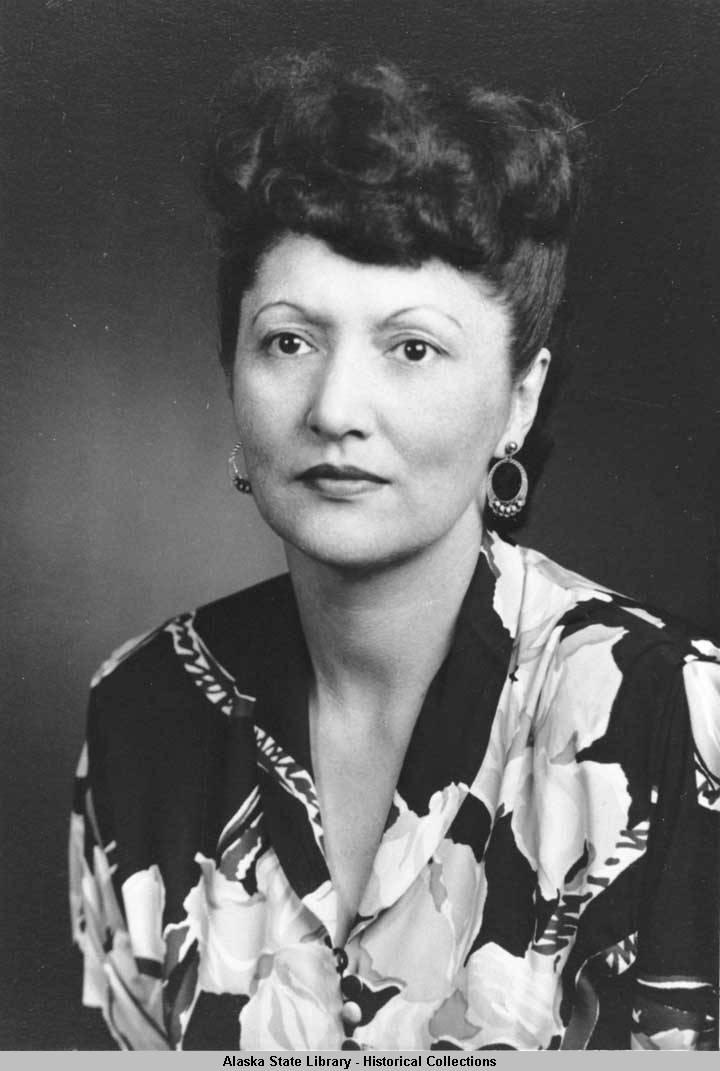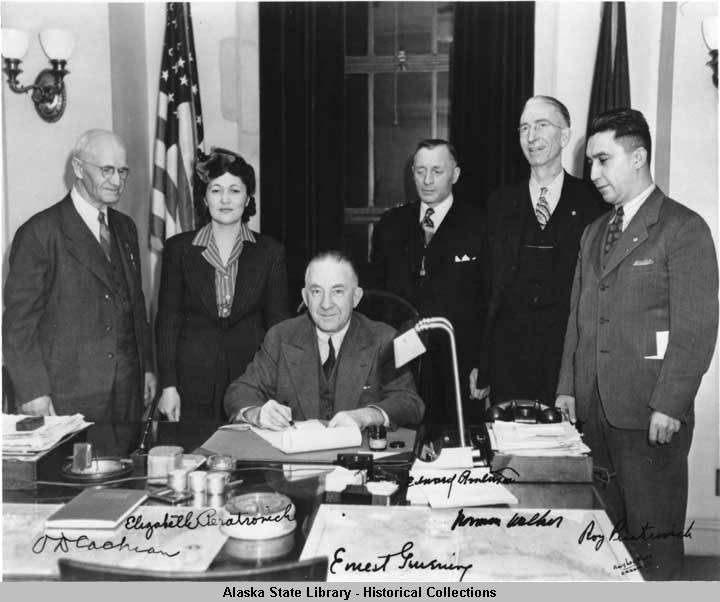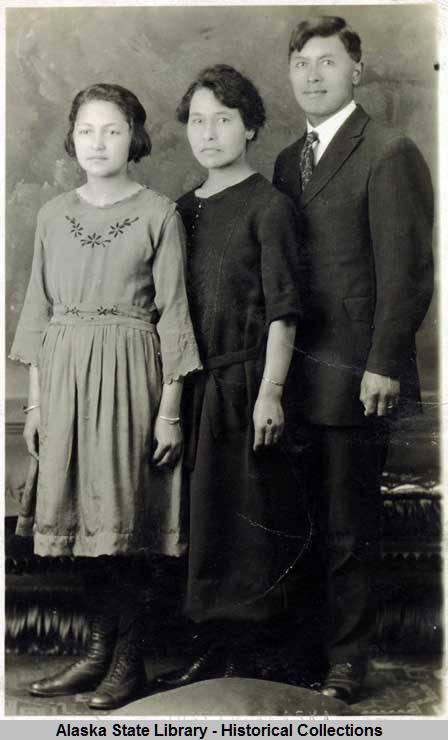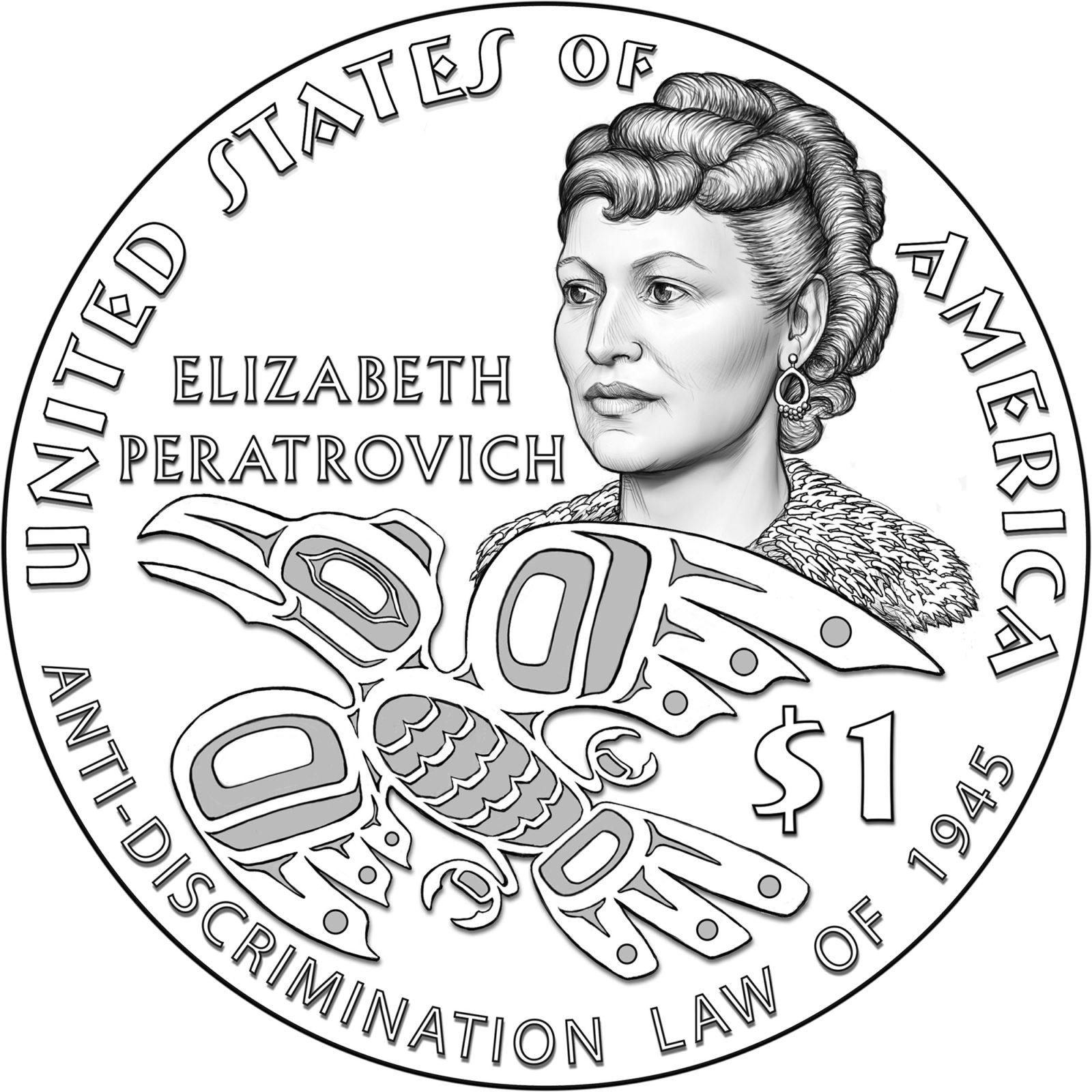
Honoring Elizabeth Peratrovich

The first anti-discrimination law in a U.S. state or territory passed in Alaska in 1945, and was signed into law on Feb. 16–or what we now know as Elizabeth Peratrovich Day in Alaska.
Many people fought long and hard to pass the Alaska Equal Rights Act of 1945, and Peratrovich brought her experience, intelligence, and potent oratory skills to the legislative chamber on the day of the vote to cut through the palpable and overt racism.
Alaska’s Governor Ernest Gruening, who supported and signed the bill into law, said her words were instrumental to the bill’s passage.
Signs and symptoms
Peratrovich was born in 1911 and adopted as a baby by Andrew and Jean Wanamaker. She grew up speaking English and Tlingit, and living a traditional Tlingit way of life that included harvesting, preserving, and preparing food, dancing and storytelling, and weaving spruce root baskets.

Her family lived in Sitka and then Klawock in Southeast Alaska, where she met her future husband Roy Peratrovich. Later, she moved with her family to Ketchikan where she saw that she, a Tlingit whose ancestors had lived in the region for thousands of years, was not always welcome.
There, she saw for the first time a sign she would see again and again: “No Natives Allowed.”
An early education
Elizabeth and Roy graduated from high school and married in 1931. They had three children, and lived for many years in Klawock, where Roy served as mayor for four terms. They moved to Juneau in 1941, where they encountered more signs of racism.
When the couple first looked for houses to rent, they were turned down because neighbors didn’t want to live near “Indians.” And when it came time to send their eldest child to school, they were told he had to go to go to a separate school rather than one in the neighborhood.
Notably, Elizabeth had a word with the superintendent, and Roy Jr. was the first Tlingit student admitted to that school. The city’s public schools were fully integrated by 1947.
You can fight with us, but not sit with us
During World War II, the Alaska Territorial Guard defending Alaska’s shores was almost entirely comprised of Alaska Native volunteers, while many other Alaska Native people joined United Service Organizations and served overseas.

Yet at home, on their homelands, they were forced into segregated theaters, segregated stores, segregated hospitals, and segregated schools. They were punished for speaking their languages. They were denied jobs. They were prevented, even, from voting.
They were confronted with signs that said, “No Natives Allowed.”
During legislative debate over the equal rights bill in 1945, Senator Allen Shattuck from Juneau expressed the racist foundation of these exclusionary signs and discriminatory practices: “Far from being brought closer together, which will result from this bill, the races should be kept further apart. Who are these people, barely out of savagery, who want to associate with us whites with five thousand years of recorded history behind us?”
Closing arguments
By the time Elizabeth Peratrovich, the Grand President of the Alaska Native Sisterhood, stood up to speak before the legislature that February, she had already spent a life fighting for what the white settler legislators had always taken for granted—their right to speak, to be heard and seen, and to be respected.
So after her husband Roy spoke in support of the bill and the planned testimony had ended, the Senate president asked if anyone else wanted to speak, as was customary at the time. The gallery was packed.
Elizabeth Peratrovich put down her knitting needles, stood up, and strode down the aisle. Certain she had everyone’s attention, she turned to the legislators and began:
“I would not have expected that I, who am barely out of savagery, would have to remind gentlemen with five thousand years of recorded civilization behind them of our Bill of Rights…”
Then she continued, sharing her stories of experiencing and witnessing discrimination, challenging its logic and foundation, and calling out the role of lawmakers in recognizing wrongs and acting on them. In response to a question about whether a law would eliminate racism, she replied:
“Do your laws against larceny and murder prevent those crimes? No law will eliminate crimes but at least you as legislators can assert to the world that you recognize the evil of the present situation and speak your intent to help us overcome discrimination.”
Applause broke out from the gallery and Senate floor.
The fight continues
Peratrovich died in December 1958, just over a month before Alaska statehood, and thirty years before the Alaska Legislature established Feb. 16 as Elizabeth Peratrovich Day.

In 2019, the New York Times included Peratrovich in its “Overlooked No More” series about remarkable people whose deaths went unreported in The Times. In December 2020, Google put up a doodle honoring Elizabeth Peratrovich, and in February, the U.S. Mint released a one-dollar coin commemorating her.
The passage of the Alaska Equal Rights Act of 1945 helped stop overt discrimination, though we continue to confront the racism and colonialism that drives inequity in Alaska and across the country today.
Honoring Elizabeth Peratrovich reminds us of our obligation to find the strength and hope that she brought with her words that February day so long ago to continue the work.
MORE SOURCES:
- Fighter in Velvet Gloves, by Annie Boochever with Roy Peratrovich Jr., University of Alaska Press, Fairbanks
- Overlooked No More: Elizabeth Peratrovich, Rights Advocate for Alaska Natives, The New York Times
- Google taps Tlingit artist for Doodle honoring Alaska Native civil rights icon Elizabeth Peratrovich
- The Raven Outsmarted the Chief and freed the sun, giving light to the world, by Susan Pierce
- “A Recollection of Civil Rights Leader Elizabeth Peratrovich 1911–1958”. Compiled by Central Council of Tlingit and Haida Indian Tribes of Alaska.


